Mind over Body - Mastering the Psychological Aspect of Self-Defense Techniques
When it comes to self-defense, many people often focus solely on physical techniques, forgetting the critical role that psychology plays in effectively defending oneself. The truth is, mastering the psychological aspect of self-defense can be just as important, if not more so, than learning how to throw a punch or execute a takedown. Imagine being in a high-pressure situation where your heart is racing, your palms are sweaty, and your mind is clouded with fear. How you respond in those moments can make all the difference. This article dives deep into the crucial psychological factors influencing self-defense, emphasizing the importance of mental preparedness, emotional regulation, and the right mindset. By the end, you'll not only understand how to defend yourself physically but also how to harness the power of your mind to navigate potential threats with confidence and clarity.
Mental preparedness is the cornerstone of effective self-defense. It’s not just about knowing how to react physically; it’s about being ready to face the unexpected mentally. One of the best ways to enhance your mental readiness is through visualization. This technique involves imagining yourself in various self-defense scenarios, allowing you to mentally rehearse your responses. Picture this: you’re walking down a dimly lit street when suddenly, you find yourself confronted by an aggressive individual. By having already visualized this encounter, your mind can quickly access the appropriate response, reducing hesitation and fear. Furthermore, scenario training—where you practice specific situations with a partner—can also be invaluable. This proactive mindset prepares you for high-pressure situations, making your reactions feel more instinctive when the moment arises.
Understanding and managing your emotions is vital during self-defense encounters. When faced with a threat, feelings of fear and anxiety can quickly overwhelm you, clouding your judgment and impairing your ability to act. Therefore, learning strategies for emotional regulation is essential. Techniques such as breathing exercises can help calm your nerves, allowing you to focus on the situation at hand. Mindfulness practices can also enhance your emotional control by promoting awareness of your feelings without letting them dictate your actions. For instance, taking a few deep breaths and grounding yourself in the present moment can help you regain composure, enabling you to make informed decisions during confrontations.
Visualization is not just a tool for athletes; it can significantly improve performance in self-defense as well. By employing mental imagery, individuals can prepare themselves for real-life situations, enhancing both confidence and response time when faced with threats. When you visualize yourself successfully defending against an attacker, you’re essentially programming your mind for success. It’s like rehearsing a play before the big performance; the more you practice, the more natural it becomes. This mental preparation can lead to a more confident demeanor and quicker reactions when it matters most.
Practicing various self-defense scenarios helps build mental resilience. Engaging in role-playing exercises or simulation training can prepare you for unexpected encounters, fostering a proactive approach to potential threats. Think of it as a dress rehearsal for life; the more you practice, the more equipped you become. This not only boosts your confidence but also sharpens your instinctual responses, making it easier to react appropriately under pressure.
Mindfulness enhances awareness and focus, both of which are essential for effective self-defense. By incorporating practical mindfulness exercises into your routine, you can improve your situational awareness and learn to stay calm under pressure. Simple practices such as focusing on your breath, observing your surroundings, or even engaging in meditation can cultivate a sense of peace and clarity. This heightened awareness allows you to assess situations more accurately, making it easier to respond effectively when faced with a threat.
Fear and anxiety are common reactions in threatening situations, but they don’t have to control you. Techniques such as cognitive reframing can help you shift your perspective on fear, transforming it into a source of energy rather than paralysis. Grounding exercises, such as focusing on your senses—what you can see, hear, and feel—can also help maintain clarity and focus during a confrontation. By training your mind to handle these emotions, you can turn what could be a debilitating experience into an opportunity for empowerment.
A strong mindset is crucial for enhancing your self-defense capabilities. Resilience is a key characteristic of a strong mindset, which includes adaptability, confidence, and a growth-oriented perspective. When faced with challenges, those with a resilient mindset are more likely to view setbacks as opportunities for growth rather than insurmountable obstacles. This shift in perspective can be incredibly powerful, especially in self-defense situations where quick thinking and adaptability can be the difference between safety and danger.
Confidence is a game-changer in self-defense situations. It’s not just about believing in your physical abilities; it’s about having faith in your capacity to handle any situation that comes your way. Methods to build self-confidence include skill mastery—practicing techniques until they become second nature—and employing positive self-talk. Reflecting on past experiences where you successfully navigated challenges can also reinforce a confident demeanor. Remember, confidence is contagious; when you exude it, others are less likely to see you as a target.
Being adaptable can be a game-changer in self-defense. In unpredictable situations, the ability to adjust your tactics and decision-making is crucial. Emphasizing flexibility in your approach can lead to better outcomes, allowing you to respond effectively to the unique dynamics of each encounter. Just as a skilled dancer adjusts their movements to the rhythm of the music, being adaptable in self-defense means being able to shift your strategy based on the circumstances you face.
- What is the most important aspect of self-defense? Mental preparedness is crucial, as it helps you respond effectively in high-pressure situations.
- How can I improve my emotional regulation during a confrontation? Techniques like breathing exercises and mindfulness can help you maintain composure.
- What role does visualization play in self-defense? Visualization helps prepare your mind for real-life situations, enhancing confidence and response time.
- Why is adaptability important in self-defense? Being adaptable allows you to adjust your tactics based on the specific dynamics of a confrontation.

The Role of Mental Preparedness
Mental preparedness is not just a fancy term; it's the bedrock of effective self-defense. Imagine walking into a room filled with strangers, and suddenly, you feel a surge of adrenaline. Your heart races, your palms sweat, and your mind goes blank. This reaction is all too common, but with the right mental preparation, you can transform that anxiety into a powerful tool for survival. It's about training your brain to respond calmly and decisively, even in the most chaotic situations.
One of the key techniques to enhance mental readiness is visualization. This involves mentally rehearsing various scenarios where you might need to defend yourself. Picture yourself in a confrontational situation—how do you react? What moves do you make? By vividly imagining these scenarios, you can create neural pathways in your brain that prepare you for real-life encounters. This practice not only boosts your confidence but also sharpens your response time, making your body instinctively react in a way that aligns with your mental training.
Another effective method is scenario training. This goes beyond mere imagination; it involves physically practicing different self-defense techniques in controlled environments. Think of it as a dress rehearsal for the main event. By role-playing various self-defense situations, you cultivate a sense of familiarity and comfort with your responses. Whether it's a sudden attack or an unexpected confrontation, practicing these scenarios can significantly enhance your mental resilience. You begin to see threats as challenges rather than insurmountable obstacles, allowing you to approach them with a proactive mindset.
Moreover, adopting a proactive mindset is crucial. This means being aware of your surroundings and anticipating potential threats before they escalate. It’s like being a chess player, always thinking a few moves ahead. This mindset not only prepares you for self-defense but also empowers you to take control of situations rather than simply reacting to them. By fostering a proactive attitude, you can navigate high-pressure situations more effectively and confidently.
In summary, mental preparedness is a multifaceted approach that combines visualization, scenario training, and a proactive mindset. Each of these elements plays a vital role in enhancing your self-defense capabilities. By investing time in mental preparation, you not only equip yourself with the necessary skills but also build a strong foundation for navigating the unpredictable nature of confrontations. Remember, the mind is a powerful ally in self-defense, and mastering it can make all the difference in a critical moment.
- What is mental preparedness in self-defense? It refers to the mental strategies and techniques used to prepare oneself for potential confrontations, enhancing both confidence and response time.
- How can visualization help in self-defense? Visualization allows individuals to mentally rehearse scenarios, creating neural pathways that prepare them for real-life situations.
- What is scenario training? Scenario training involves practicing self-defense techniques in controlled environments to build familiarity and confidence in handling confrontations.
- Why is a proactive mindset important? A proactive mindset helps individuals anticipate potential threats and respond effectively, rather than merely reacting to situations.
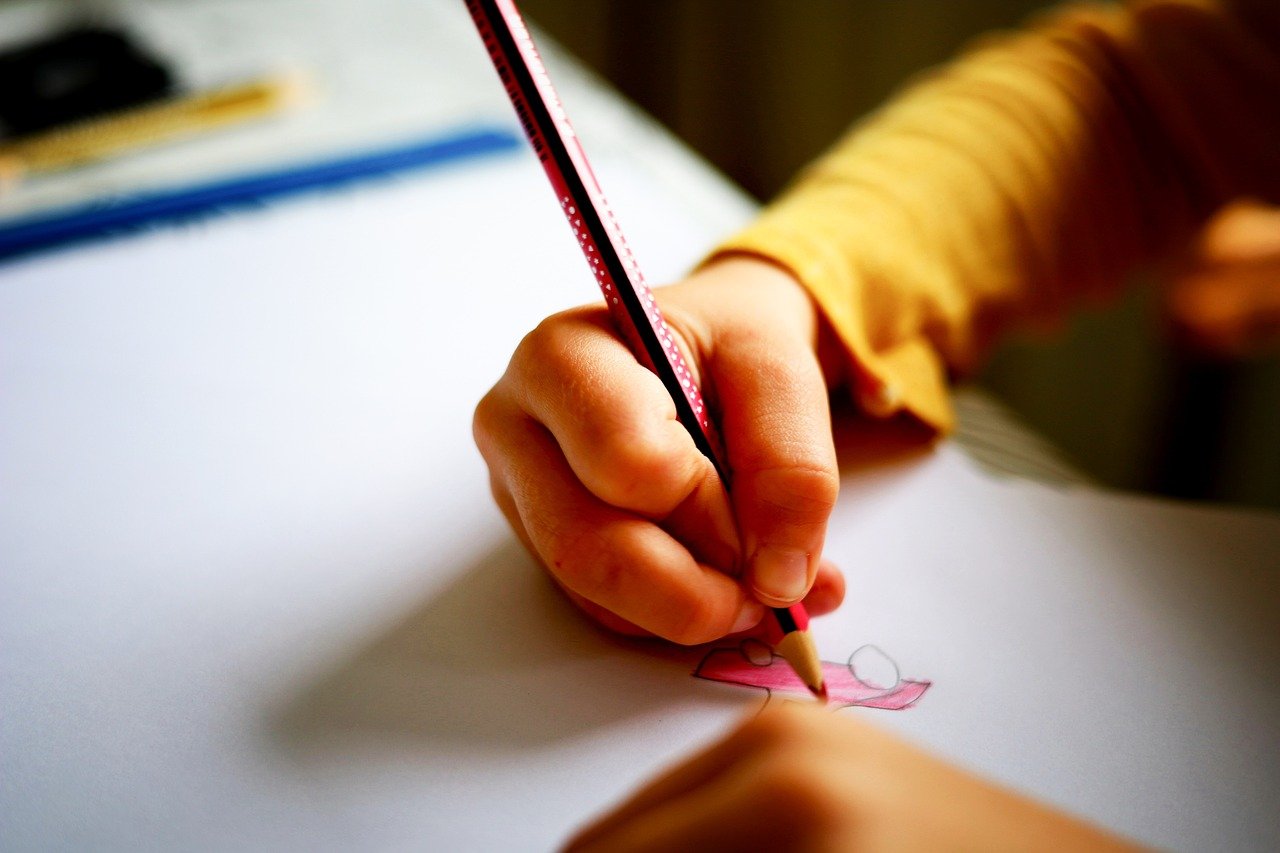
When it comes to self-defense, the ability to manage your emotions is just as crucial as mastering physical techniques. Imagine being in a high-pressure situation where your heart races, and your palms sweat. In moments like these, emotional regulation can mean the difference between panic and effective action. It’s about finding that calm center amidst chaos, allowing you to think clearly and respond appropriately. This section explores various strategies that can help you maintain composure, enabling you to make informed decisions during confrontations.
One of the most effective strategies for emotional regulation is the use of breathing techniques. When faced with a threat, our body often enters a fight-or-flight response, which can cloud our judgment. By focusing on your breath, you can anchor yourself in the present moment. For instance, try the 4-7-8 breathing technique: inhale for four seconds, hold for seven, and exhale for eight. This simple practice can significantly reduce anxiety and help you regain control over your emotions.
Mindfulness also plays a key role in emotional regulation. By practicing mindfulness, you enhance your awareness of both your surroundings and your internal state. This heightened awareness allows you to recognize emotional triggers before they escalate. Simple mindfulness exercises, such as observing your thoughts without judgment, can help you stay calm and focused. Consider setting aside just a few minutes each day for mindfulness meditation; it can create a profound impact on your ability to handle stress in real-life situations.
In addition to breathing and mindfulness, grounding techniques can be invaluable in managing overwhelming emotions. Grounding involves connecting with the present moment and your physical surroundings, which can help you detach from fear and anxiety. Techniques may include feeling the ground beneath your feet, noticing the colors around you, or even engaging your senses by focusing on sounds or smells. These practices can bring you back to reality and provide clarity during a confrontation, allowing you to act rather than react.
To further illustrate these strategies, consider the following table that summarizes key emotional regulation techniques:
| Technique | Description | Benefits |
|---|---|---|
| Breathing Techniques | Controlled breathing exercises to calm the nervous system. | Reduces anxiety, enhances focus. |
| Mindfulness | Practicing present-moment awareness through meditation. | Improves emotional awareness, decreases stress. |
| Grounding Techniques | Connecting with the present through sensory experiences. | Helps maintain clarity and focus under pressure. |
Ultimately, mastering emotional regulation is about transforming your mindset. It’s not just about controlling fear; it’s about embracing it and using it to fuel your instincts. When you learn to manage your emotional responses, you empower yourself to face challenges head-on. Remember, every confrontation is a unique situation, and being emotionally prepared equips you to navigate through uncertainty with confidence and clarity.
Q: How can I practice emotional regulation daily?
A: Incorporate breathing exercises, mindfulness meditation, and grounding techniques into your daily routine. Even spending just a few minutes on these practices can enhance your emotional resilience.
Q: What should I do if I feel overwhelmed during a confrontation?
A: Focus on your breathing, use grounding techniques to reconnect with your surroundings, and remind yourself that you can take control of your reactions.
Q: Can emotional regulation improve my self-defense skills?
A: Absolutely! By managing your emotions, you enhance your ability to think clearly and respond effectively, which is crucial in self-defense situations.
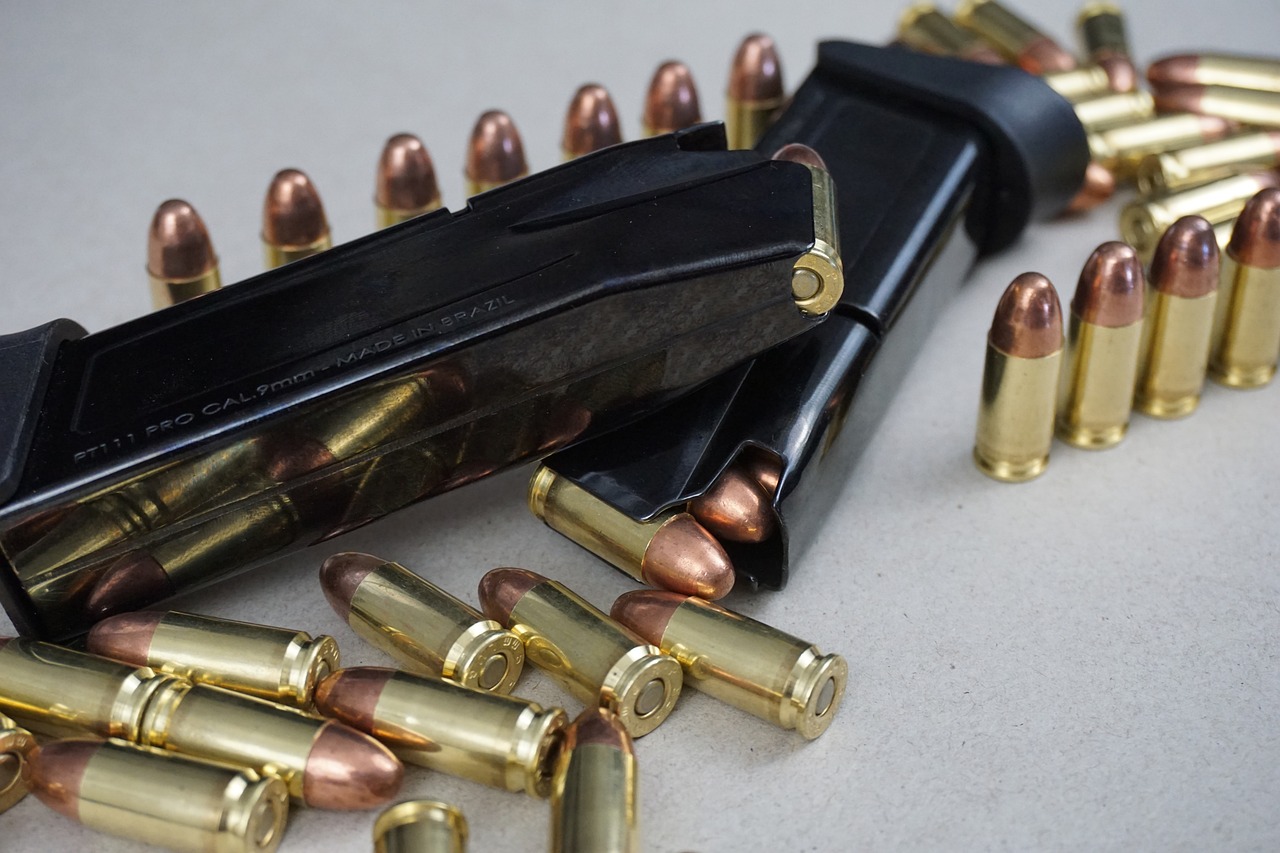
When it comes to self-defense, the mind is just as important as the body. One powerful tool that can elevate your self-defense skills is visualization. This technique involves creating mental images of yourself successfully navigating various self-defense scenarios. Imagine this: you're walking down a dimly lit street, and suddenly, you sense someone following you. Instead of panicking, you visualize every step of your response—how you would assess the situation, the techniques you'd employ, and even how you'd feel as you take control. This mental rehearsal can make all the difference when faced with real-life threats.
Visualization is not just about seeing yourself in action; it's about immersing yourself in the experience. The more vividly you can imagine the details—the sounds, the feelings, and even the smells—the more effective the technique becomes. According to sports psychology, athletes often employ visualization to enhance their performance, and the same principles apply to self-defense. By mentally preparing yourself, you can improve your confidence and reaction times when it truly matters.
To effectively use visualization, consider the following steps:
- Find a quiet space: Choose a distraction-free environment where you can focus solely on your mental imagery.
- Relax your mind: Start with deep breathing exercises to calm your mind and body.
- Visualize specific scenarios: Picture various self-defense situations, such as being approached aggressively or needing to escape from a hold. See yourself responding with confidence and skill.
- Engage all your senses: Make your visualization as realistic as possible. Hear the sounds around you, feel the adrenaline, and see the details of your environment.
- Repeat regularly: Consistency is key. Make visualization a part of your training routine to reinforce your mental preparedness.
Moreover, visualization can also help you develop a strong emotional response. When you visualize yourself successfully defending against an attacker, you create a mental blueprint that can reduce fear and anxiety during actual confrontations. Think of it like a dress rehearsal before the big show—you're not just preparing your body; you're also preparing your mind to handle the pressure with grace and poise.
Incorporating visualization into your self-defense training can lead to remarkable improvements in your performance. It’s not just about learning the moves; it’s about embodying the mindset of a defender. So, the next time you practice your self-defense techniques, take a moment to visualize your success. You’ll find that your body responds more effectively when your mind is already a step ahead.
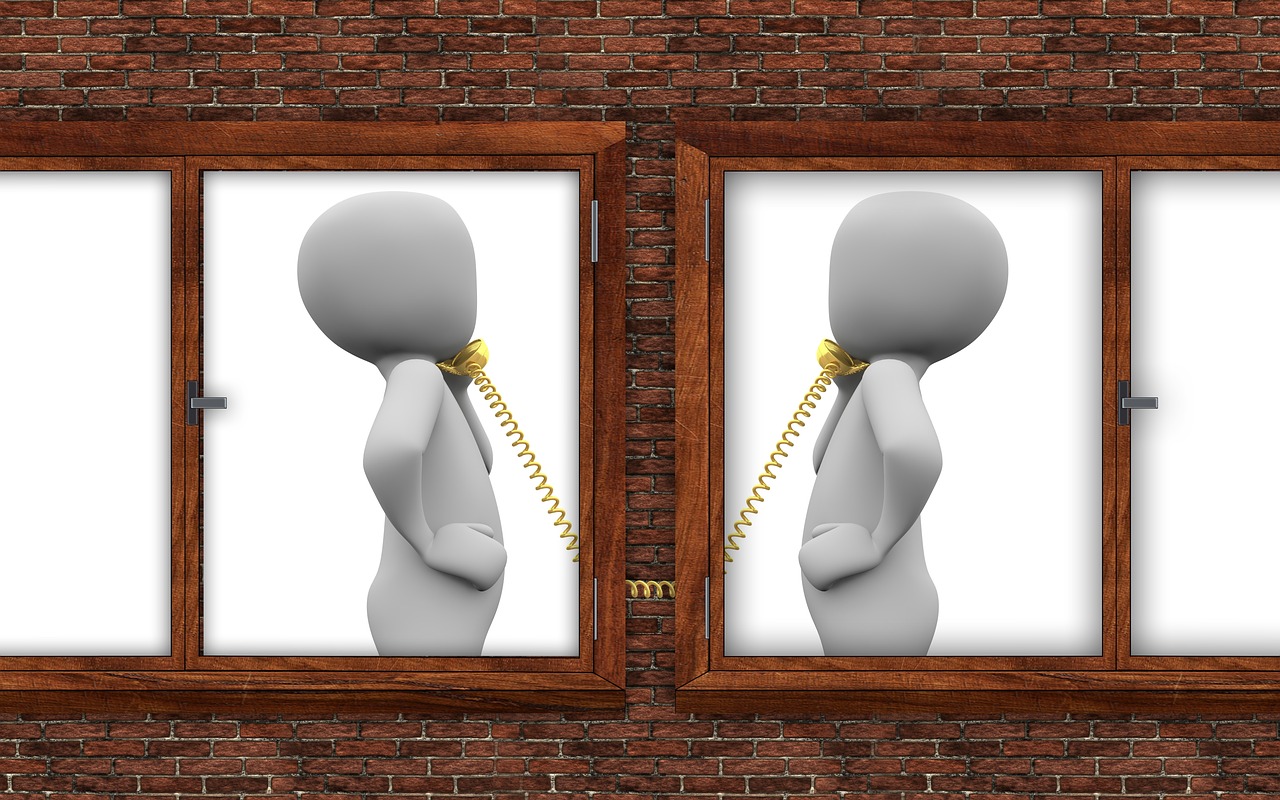
When it comes to self-defense, the adage "practice makes perfect" rings especially true. The reality is that in a high-pressure situation, your mind might go blank, and your body may respond in ways you didn't anticipate. This is why practicing various self-defense scenarios is crucial. By immersing yourself in realistic situations, you can train your mind and body to react effectively, ensuring that you are prepared for the unexpected.
Imagine walking down a quiet street when suddenly, you find yourself confronted by an aggressive individual. In that moment, your heart races, and your instincts kick in. However, if you have practiced specific scenarios beforehand, your training will guide your actions. Role-playing these situations helps build muscle memory and mental resilience. But how do you effectively practice these scenarios? Here are a few techniques you can incorporate into your training:
- Role-Playing: Partner with a friend or fellow student to simulate various confrontational situations. This can range from verbal altercations to physical threats. The more varied the scenarios, the better prepared you'll be.
- Simulation Training: Use props or equipment to create realistic environments. This could be as simple as practicing in a familiar area or using gear to mimic real-life threats.
- Feedback Sessions: After practicing, discuss what went well and what could be improved. Constructive feedback is essential for growth and understanding your strengths and weaknesses.
Additionally, consider integrating technology into your practice. For instance, virtual reality (VR) training programs can provide immersive experiences that replicate real-life confrontations. These programs often allow you to face various threats in a safe environment, giving you the opportunity to develop your responses without the risk of physical harm. The goal is to create a mental blueprint that you can rely on when the stakes are high.
Furthermore, scenario practice isn't just about physical techniques; it also involves honing your mental acuity. Engaging in exercises that require quick decision-making can be incredibly beneficial. For example, you could set up a situation where you must choose between different self-defense techniques based on the aggressor's behavior. This type of mental rehearsal prepares you to think on your feet, enhancing your ability to adapt to changing circumstances during a confrontation.
In conclusion, practicing scenarios is an indispensable part of mastering self-defense. It equips you with the necessary tools to respond effectively when faced with real threats. By immersing yourself in various situations, utilizing technology, and engaging in feedback practices, you can cultivate a proactive mindset that enhances your overall self-defense capabilities. Remember, the more you practice, the more confident and prepared you'll feel when it truly counts.
- How often should I practice self-defense scenarios? It's recommended to practice at least once a week to maintain your skills and mental readiness.
- Can I practice self-defense alone? While practicing with a partner is ideal, you can also engage in solo drills that focus on technique and mental visualization.
- What should I do if I freeze during a confrontation? This is a common reaction. Practicing scenarios can help reduce this response, but if it happens, try to ground yourself by focusing on your breathing and assessing the situation.
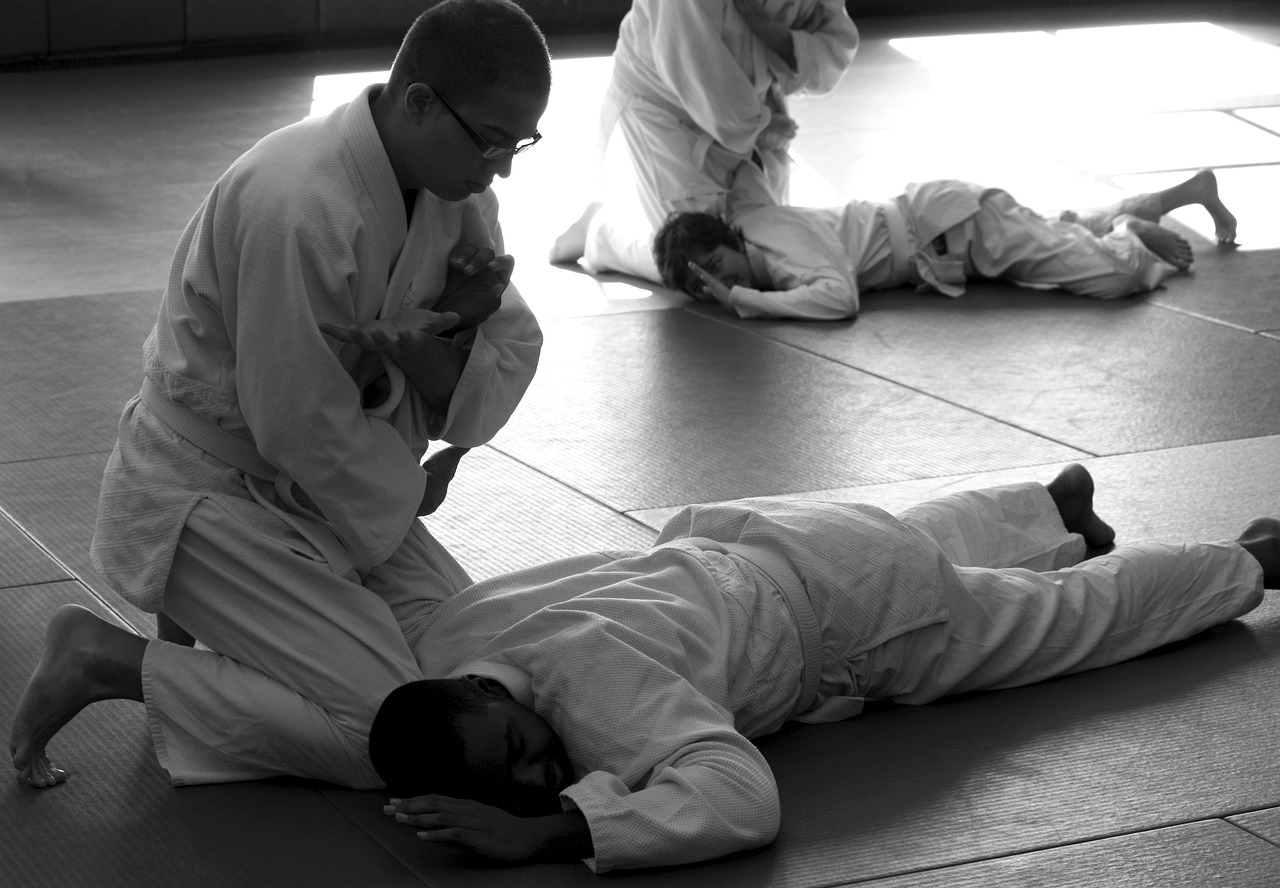
When it comes to self-defense, many people often focus solely on physical techniques, neglecting the power of the mind. However, integrating mindfulness practices into your self-defense training can significantly enhance your ability to stay calm and focused during confrontations. Mindfulness is all about being present in the moment and fully aware of your surroundings, which is crucial when facing a potential threat. Imagine walking through a crowded street and suddenly sensing that something feels off; your ability to recognize and react to that feeling can be the difference between safety and danger.
To cultivate mindfulness, you can engage in various exercises that sharpen your awareness and improve your response time. One effective practice is the body scan meditation. This exercise involves mentally scanning your body from head to toe, paying attention to any sensations, tension, or discomfort. By doing this regularly, you train your mind to recognize physical cues that may indicate stress or anxiety during a confrontation. Furthermore, you learn to ground yourself in the present moment, which can help you avoid becoming overwhelmed by fear.
Another beneficial mindfulness technique is breathing exercises. Deep, controlled breathing can help lower your heart rate and reduce anxiety levels, making it easier to think clearly when faced with a threat. For instance, try the 4-7-8 technique: inhale through your nose for a count of four, hold your breath for seven counts, and then exhale through your mouth for eight counts. This simple yet effective method can be practiced anywhere, anytime, and can provide a calming effect when you feel tension rising.
In addition to these techniques, consider incorporating mindful observation into your daily routine. This means consciously observing your environment without judgment. For example, while waiting in line or commuting, take a moment to notice the colors, sounds, and movements around you. This practice not only enhances your situational awareness but also helps you become more attuned to potential threats in your surroundings.
Ultimately, the goal of mindfulness in self-defense is to create a mental state that allows for clear thinking and decisive action. By practicing mindfulness regularly, you can develop a heightened sense of awareness that will serve you well in high-pressure situations. Remember, it's not just about having the right physical skills; it's about having the right mindset. Being mentally prepared means you can respond effectively and confidently when it matters most.

Fear and anxiety are natural responses when faced with threatening situations. They can feel overwhelming, like a tidal wave crashing down, leaving you gasping for breath. However, understanding how to cope with these emotions is crucial for effective self-defense. Imagine you're walking alone at night, and suddenly, you hear footsteps behind you. Your heart races, palms sweat, and your mind spirals into panic. Instead of succumbing to fear, what if you had tools to regain control? This is where effective coping strategies come into play.
One of the most powerful techniques for managing fear is cognitive reframing. This involves shifting your perspective on the situation. Instead of viewing the threat as insurmountable, you can remind yourself of your capabilities and past successes. For example, think about a time when you faced a challenge and overcame it. By focusing on your strengths, you can transform fear into a motivating force. It’s like turning the volume down on a scary movie; suddenly, the terror isn’t as overwhelming.
Grounding exercises are another effective method for coping with anxiety. These techniques help anchor you in the present moment, making it easier to manage overwhelming feelings. A simple grounding exercise involves focusing on your senses. Take a moment to identify:
- Three things you can see
- Two things you can touch
- One thing you can hear
By engaging your senses, you can divert your attention from the fear and focus on what is real and immediate. It’s like having a mental safety net that catches you when you’re about to fall into the abyss of anxiety.
Additionally, breathing techniques can be incredibly effective for calming the mind and body. When faced with a threat, our breathing often becomes rapid and shallow. By consciously slowing your breath, you signal to your body that it’s safe to relax. Try this: inhale deeply through your nose for a count of four, hold for four, and exhale through your mouth for a count of six. Repeat this several times, and you’ll likely feel a wave of calm wash over you. It’s like hitting the reset button on your emotional state.
Lastly, practicing mindfulness can significantly enhance your ability to cope with fear and anxiety. Mindfulness encourages you to observe your thoughts and feelings without judgment. This practice can help you recognize when fear is creeping in, allowing you to respond rather than react. Imagine watching clouds float by; you acknowledge their presence but don’t let them consume you. By cultivating this awareness, you can maintain clarity and focus, even in the most stressful situations.
In summary, coping with fear and anxiety is about arming yourself with the right tools. Whether it’s cognitive reframing, grounding exercises, breathing techniques, or mindfulness practices, each strategy provides a way to navigate the stormy seas of fear. Remember, the goal isn’t to eliminate fear entirely but to manage it effectively so you can respond with confidence and clarity when it matters most.
Q: Can fear ever be beneficial?
A: Yes! Fear can serve as a protective mechanism, alerting you to potential dangers and prompting you to take action.
Q: How long does it take to learn these coping techniques?
A: The time varies for each individual, but with consistent practice, you can start seeing improvements in a matter of weeks.
Q: Are these techniques effective in all situations?
A: While they can be helpful in many scenarios, it's essential to assess each situation individually and adapt your approach accordingly.

When it comes to self-defense, having a strong mindset is like having a secret weapon. It’s the mental armor that protects you from the chaos of a threatening situation. Imagine walking into a room filled with tension; your heart races, and your palms get sweaty. But instead of succumbing to fear, you stand tall, ready to face whatever comes your way. That’s the power of a resilient mindset, and it’s something anyone can cultivate with practice.
So, what does it mean to have a strong mindset in self-defense? It’s about being adaptable, confident, and having a growth-oriented perspective. Think of it as a mental toolkit filled with strategies to tackle challenges head-on. Just like a craftsman knows which tool to use for each job, you can equip yourself with the right mental tools to navigate confrontations effectively.
One of the cornerstone characteristics of a strong mindset is adaptability. In a self-defense scenario, the ability to pivot and adjust your approach can be the difference between success and failure. For instance, if an attacker changes their tactics, being rigid in your response could lead to disaster. Instead, if you can think on your feet and modify your strategy, you’re more likely to find an effective solution. This flexibility not only applies to physical techniques but also to your mental approach. The more adaptable you are, the better equipped you’ll be to handle the unexpected.
Confidence plays a pivotal role in self-defense as well. It’s not just about knowing how to throw a punch or escape a hold; it’s about believing in your ability to act decisively when the moment arises. Confidence can be built through skill mastery. The more you practice your techniques, the more assured you’ll feel in your capabilities. Engaging in regular training sessions can help you hone your skills, making them second nature. Additionally, positive self-talk can significantly boost your confidence. Remind yourself of your strengths and past achievements; this mental reinforcement can prepare you to face challenges with a calm and assertive demeanor.
Moreover, your past experiences shape your mindset. Reflecting on previous encounters, whether they were successful or not, can provide valuable lessons. Instead of viewing setbacks as failures, consider them stepping stones to improvement. This growth-oriented perspective allows you to embrace challenges rather than shy away from them. In self-defense, every experience adds to your resilience, building a mental framework that supports your ability to handle future confrontations.
In summary, developing a strong mindset is essential for mastering self-defense techniques. By focusing on adaptability, confidence, and a growth-oriented perspective, you can cultivate the mental strength needed to navigate any situation. Remember, it’s not just about the physical skills; it’s about training your mind to respond effectively. So the next time you find yourself in a potentially dangerous situation, tap into that mental toolkit and face it with unwavering strength.
- How can I improve my adaptability in self-defense? Practice various scenarios and techniques regularly to become more comfortable with changing tactics.
- What are some effective ways to build confidence? Focus on skill mastery, engage in positive self-talk, and reflect on past successes to reinforce your belief in your abilities.
- How does a growth-oriented mindset help in self-defense? Embracing challenges and learning from experiences allows you to improve continuously and prepare for unexpected situations.
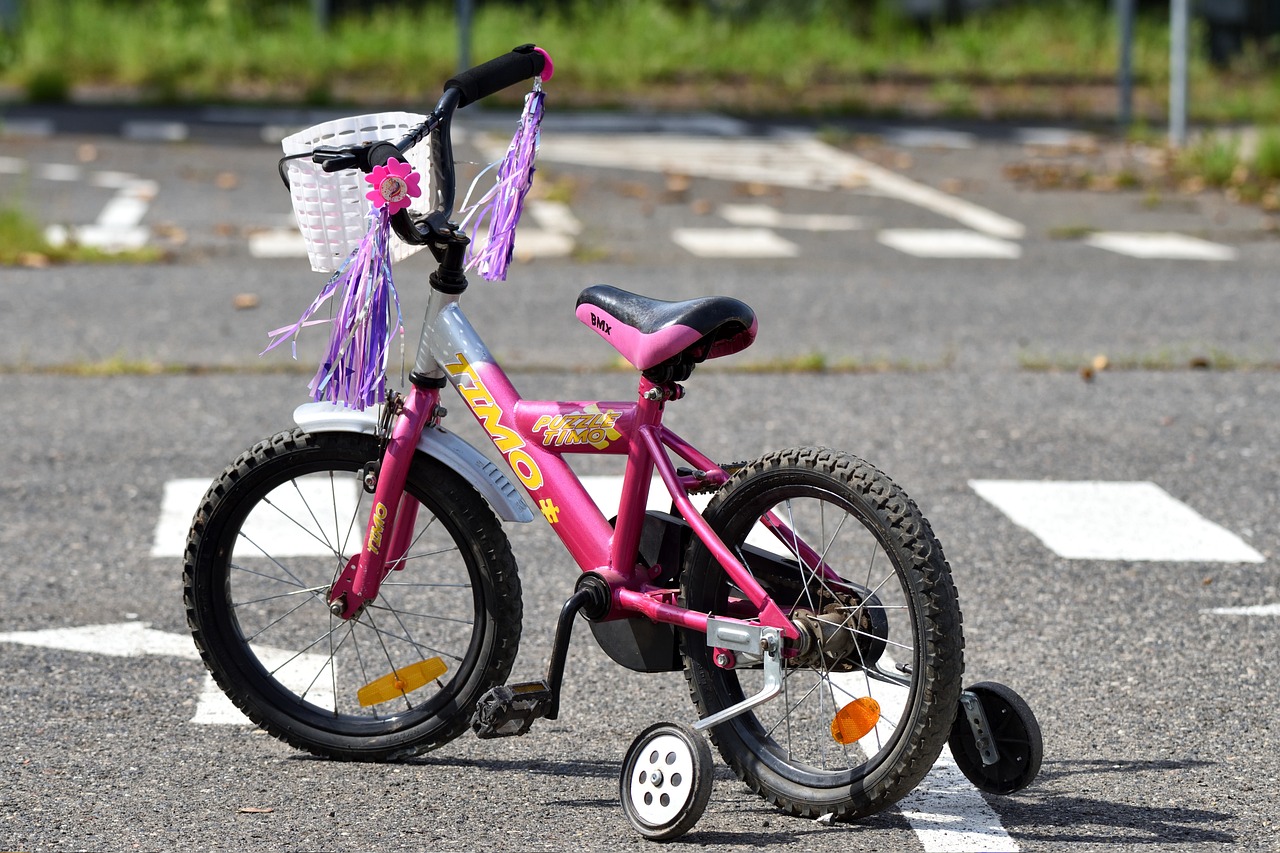
Confidence is like the fuel that powers your self-defense engine. Without it, even the best techniques can fall flat. Imagine walking into a room filled with potential threats, your heart racing, palms sweating, and doubt creeping in. Now, picture yourself standing tall, with an unwavering belief in your abilities. That’s the difference confidence makes! But how do you cultivate this essential trait?
First, let's talk about skill mastery. The more proficient you become in self-defense techniques, the more confident you will feel. Just like a musician practices scales until they can play them flawlessly, you should dedicate time to practice your moves until they become second nature. This repetition not only builds muscle memory but also instills a sense of accomplishment that boosts your self-esteem. When you know you can handle yourself in a confrontation, you walk with an air of confidence that can deter potential aggressors.
Next, we need to address the power of positive self-talk. Our internal dialogue can either be our greatest ally or our worst enemy. Instead of letting negative thoughts seep in—like “What if I fail?” or “I can’t do this”—replace them with affirmations such as “I am capable” and “I am prepared.” This shift in mindset can transform your perspective and enhance your confidence levels. Consider keeping a journal where you jot down your achievements, no matter how small. Reflecting on your progress can serve as a powerful reminder of your capabilities.
Another critical aspect of building confidence is learning from past experiences. Every encounter, whether successful or not, offers valuable lessons. Instead of dwelling on mistakes, analyze what went wrong and how you can improve. This growth-oriented perspective not only fosters resilience but also reinforces the belief that you can adapt and overcome challenges. Remember, even the most skilled practitioners started somewhere, and each step forward is a testament to your growth.
In addition to these methods, consider engaging in physical conditioning. Strength training, cardio, and flexibility exercises not only prepare your body for the demands of self-defense but also enhance your overall confidence. When you feel strong and fit, it reflects in your posture and demeanor. You project an image of someone who can handle themselves, which can be incredibly empowering.
Lastly, surround yourself with supportive individuals. Whether it’s friends, family, or fellow practitioners, having a solid support system can significantly boost your confidence. They can provide encouragement, share experiences, and even train with you, creating a positive environment that fosters growth. Remember, confidence is contagious; when you see others believing in themselves, it inspires you to do the same.
In conclusion, building confidence is a multifaceted process that takes time and dedication. By mastering your skills, engaging in positive self-talk, learning from past experiences, maintaining physical fitness, and surrounding yourself with supportive people, you can cultivate a level of confidence that not only enhances your self-defense capabilities but also enriches your overall life experience. So, are you ready to take the leap and become the confident individual you aspire to be?
- How long does it take to build confidence in self-defense? Building confidence is a personal journey and varies for each individual. With consistent practice and positive reinforcement, many people start feeling more confident within a few weeks.
- Can I build confidence without prior experience in self-defense? Absolutely! Everyone starts somewhere. Engaging in classes or training sessions can help you develop skills and confidence simultaneously.
- What if I still feel anxious despite practicing? It’s normal to feel anxiety in new situations. Incorporate relaxation techniques, such as deep breathing or visualization, to help manage those feelings.

When it comes to self-defense, one of the most critical skills you can develop is adaptability. Imagine being caught in a sudden storm without an umbrella; you either get soaked or quickly find a way to shelter yourself. Similarly, in self-defense situations, the ability to adjust your tactics and responses based on the circumstances can be the difference between safety and danger. Every confrontation is unique, and being adaptable means you can respond effectively to whatever challenges arise.
Adaptability in confrontations involves a combination of mental agility and practical skills. It’s about having a toolkit of strategies that you can draw upon when the unexpected happens. For instance, if you’re trained in a specific technique but your opponent counters it, the ability to pivot and apply a different approach can help you regain control of the situation. This is akin to a chess player who must think several moves ahead; flexibility in strategy can lead to victory.
To enhance your adaptability, consider incorporating the following strategies into your training:
- Scenario-Based Training: Engage in drills that mimic real-life confrontations. By exposing yourself to various situations, your brain becomes accustomed to thinking on its feet.
- Cross-Training: Learning different martial arts or self-defense systems can provide you with a broader range of techniques and perspectives, making it easier to adapt when faced with a threat.
- Feedback and Reflection: After training sessions or sparring matches, take time to reflect on what worked and what didn’t. This self-analysis helps you recognize areas where you can improve your adaptability.
Moreover, maintaining a calm demeanor during a confrontation is crucial. When panic sets in, your ability to think clearly diminishes. Practicing mindfulness and breathing techniques can help you stay grounded, allowing your brain to process information and respond appropriately. Think of it as tuning an instrument; when you’re in harmony with your surroundings, your responses become more fluid and effective.
In the end, adaptability isn't just about physical responses; it’s also a mental game. Cultivating a mindset that embraces change and uncertainty will empower you to face confrontations with confidence. Just as a skilled dancer adjusts their movements to the rhythm of the music, a self-defense practitioner must learn to flow with the dynamics of a situation. By embracing adaptability, you not only enhance your self-defense skills but also build a resilient mindset that prepares you for life's unpredictability.
1. Why is adaptability important in self-defense?
Adaptability allows you to respond effectively to unexpected situations, increasing your chances of successfully defending yourself.
2. How can I improve my adaptability in confrontations?
Engage in scenario-based training, cross-train in different martial arts, and practice mindfulness techniques to enhance your mental and physical flexibility.
3. What role does mindset play in adaptability?
A resilient mindset fosters a willingness to change tactics and embrace uncertainty, which is essential for effective self-defense.
Frequently Asked Questions
- What is mental preparedness in self-defense?
Mental preparedness refers to the psychological readiness to respond effectively in self-defense situations. It involves techniques like visualization and scenario training to help individuals anticipate and react to potential threats confidently.
- How can I improve my emotional regulation during a confrontation?
Improving emotional regulation can be achieved through various strategies, such as practicing breathing techniques and mindfulness. These methods help maintain composure and clarity, allowing for better decision-making in high-pressure situations.
- What are visualization techniques, and how do they help?
Visualization techniques involve mentally rehearsing self-defense scenarios to enhance performance. By imagining yourself successfully navigating a confrontation, you can boost your confidence and improve your response time when faced with real threats.
- Why is practicing scenarios important for self-defense?
Practicing scenarios builds mental resilience and prepares individuals for unexpected encounters. Role-playing and simulations help create a proactive mindset, enabling better reactions to potential threats.
- How does mindfulness contribute to self-defense?
Mindfulness enhances awareness and focus, which are crucial for self-defense. By incorporating mindfulness exercises into your routine, you can improve situational awareness and maintain calmness under pressure, making it easier to respond effectively.
- What techniques can help cope with fear and anxiety during a confrontation?
Techniques such as cognitive reframing and grounding exercises can help manage fear and anxiety. These methods allow you to maintain clarity and focus, enabling better decision-making during stressful situations.
- What characteristics define a strong mindset in self-defense?
A strong mindset is characterized by adaptability, confidence, and a growth-oriented perspective. These traits help individuals overcome challenges and respond effectively in self-defense situations.
- How can I build confidence for self-defense?
Building confidence involves mastering self-defense skills, practicing positive self-talk, and reflecting on past experiences. These elements contribute to a confident demeanor, which is essential during confrontations.
- Why is adaptability important in self-defense?
Adaptability is crucial in self-defense because situations can change rapidly. Being flexible in tactics and decision-making can lead to better outcomes, allowing individuals to respond effectively to unpredictable threats.



















